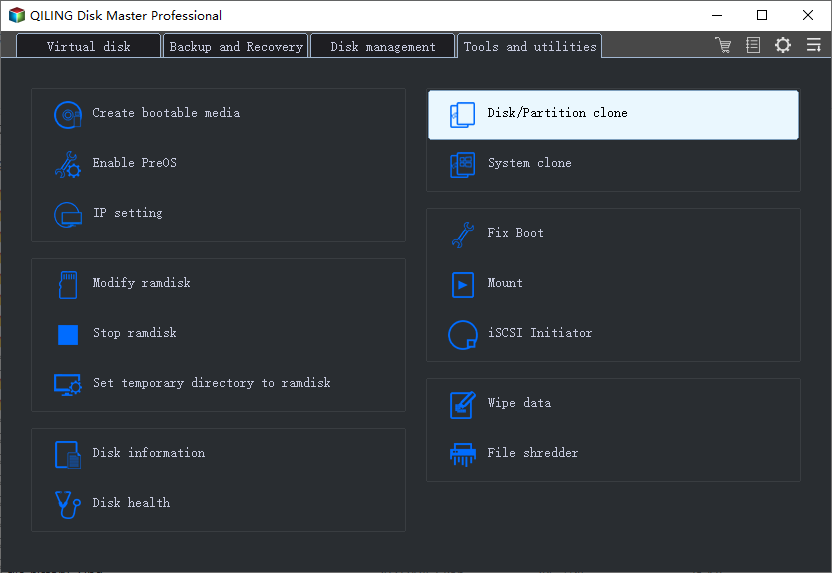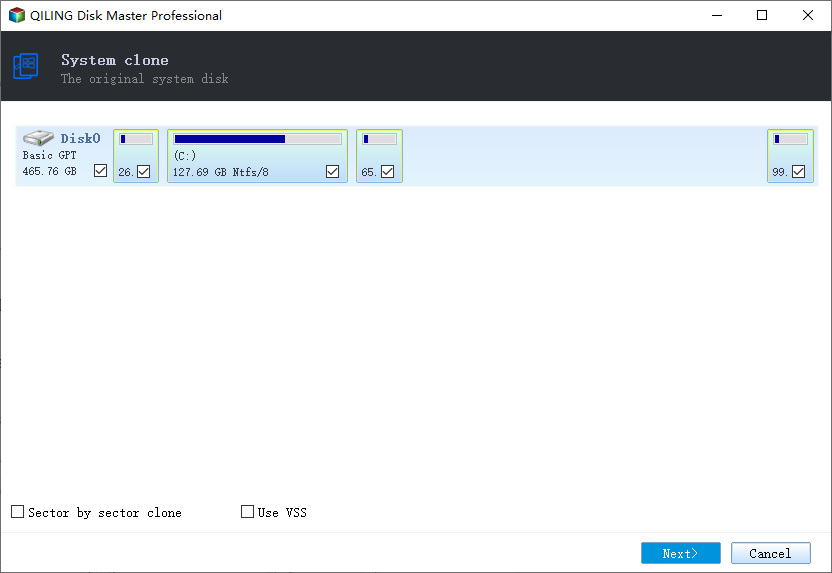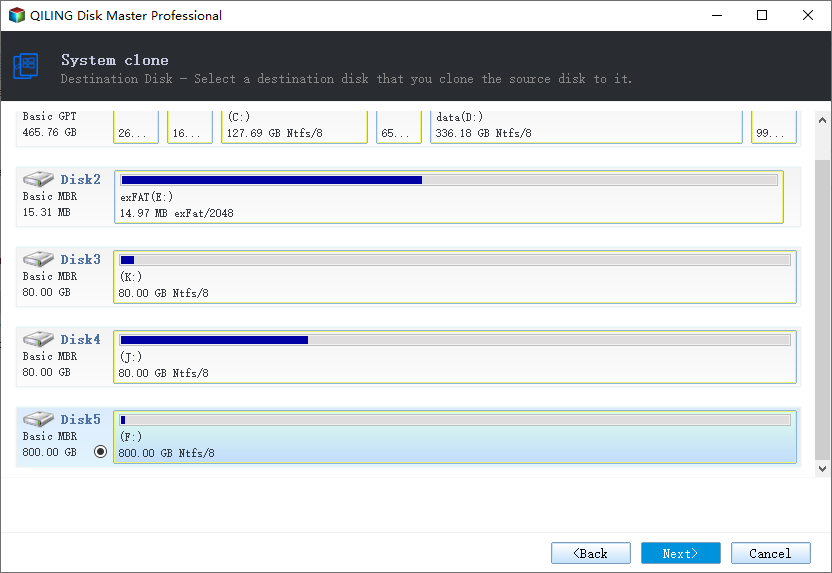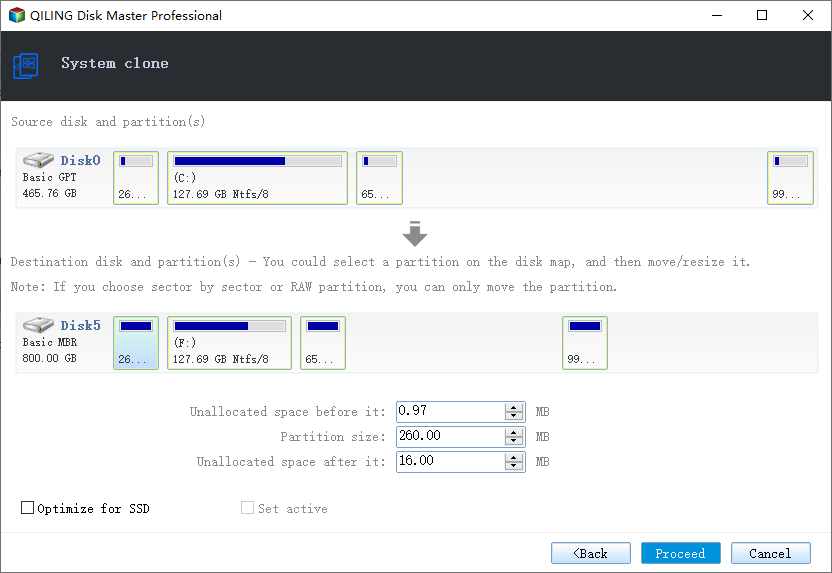How to Upgrade Windows 7/10 System Hard Drive without Reinstalling Windows
Problems of upgrading Windows 7/10 system hard drive
Windows 7 system hard drive upgrade problem:
The lifetime of a hard disk is relatively short, typically lasting only a few years. As a result, it may eventually fail to meet your speed and storage needs. The release of Windows 7 has sparked excitement among users, who are eager to upgrade from their old operating system and take advantage of the new features, including improved desktop functionality, easier networking, and better file organization, all of which contribute to enhanced performance.
Upgrading to Windows 7 can be a disaster for users with old and small hard drives, as it can barely run smoothly on such hardware. To resolve this issue, the best option is to upgrade the hard drive to a larger one, but many users are hesitant to do so. This is because reinstalling the operating system on the new disk would erase all personal settings and applications, and transferring data to the new drive can be time-consuming and risky, as some files or applications may be lost in the process.
Windows 10 system hard drive upgrade needs:
As Windows 10 users increase, many are finding their old computers or hard drives can't keep up with the new system's demands, prompting a solution: upgrading to a larger hard drive or solid-state drive (SSD) to boost performance.
The best way to upgrade Windows 7/10 system hard drive
Many people are hesitant to upgrade their Windows 7/10 hard drive due to potential data loss and system reinstallations. However, there is a relatively easy and safe way to upgrade to a larger disk without reinstalling Windows 7/10 or losing any data, by using a cloning software to clone the entire system, including the operating system, programs, and data, to the new larger disk, ensuring a smooth transition and minimizing downtime.
When searching online for help, most people recommend using professional hard drive clone software to create an exact copy of one hard drive to another, preserving all partitions and data, including the operating system, just like the original disk. Among the many software options available, the best one for your PC and data is a common query.
How to upgrade Windows 7/10 system hard drive?
Qiling Backup is a comprehensive solution for both home and business users, offering a professional and perfect way to back up systems and important data, as well as cloning functions. It features two disk clone modules: file by file clone and sector by sector clone, providing users with a range of options to suit their specific needs.
This module only copies used space of the hard drive at a faster speed, allowing for resizing partitions on the new hard disk according to individual needs, and is only available when the file system is intact.
Cloning your file system, sector by sector, is a safe way to protect your data and upgrade your Windows system hard drive, although it may be slower. This method is also suitable for transferring your system to a new hard disk with a different configuration, using the "Recover to dissimilar hardware" feature.
With this Windows hard drive clone software, you can easily upgrade your Windows system drive without losing any data or reinstalling the system. It's a simple process that requires just a few clicks to clone the existing drive to a new one, allowing you to seamlessly transfer your Windows 7/10 system to the new disk.
Step-by-step guide:
Step 1: Launch Qiling Backup and click "System Clone".

Step 2: Select the source disk which contains the operating system.

Step 3: Choose the destination disk.

Step 4: Preview and save the changes and the software will start to clone your system disk.

Advanced options:
The advanced settings in Qiling backup can provide additional stability and smoothness when cloning a drive, but even without them, the backup can still produce an exact and intact clone.
Optimize for SSD - If the destination is an SSD, checking this option ensures sector alignment in the process.
Sector by sector clone - In the cloning process, a sector by sector clone ensures that the destination hard disk/partition is identical to the source by copying all sectors, including blank ones, resulting in the target being the same size as the original disk. This option is selected in the same step as choosing the destination disk/partition, available in both Disk clone and Partition clone wizards.
Set Active - This option ensures that the cloned system disk is able to boot normally.
Tip
After cloning the system, you can insert the new disk and replace the old system hard drive on your computer. To make the cloned system hard drive bootable after the upgrading process, follow these tips: (Note: the original text was cut off, so I couldn't include the specific tips)
1. If you need to clone all disk data to a new HDD/SSD, you can select the rest of the partitions with data to the new disk by clicking Clone.
2. After cloning the system, reboot your PC, press F2 to enter the BIOS settings, and adjust the boot order from the old hard drive to the new HDD/SSD.
Related Articles
- Download Best SSD to SSD Cloning Software
- Windows 10 Sync Folders to External Drive Solutions
- Backup Data to Tape with Tape Backup Software
- How to Clone a Hard Drive on Windows & Mac [2021]
- Clone Windows 10 Hard Disk Partition